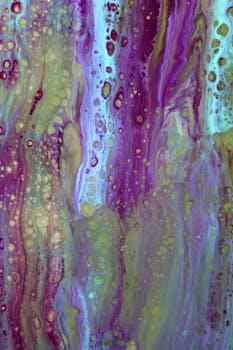What is art therapy?

What is art therapy?
Art therapy is a unique therapeutic approach that harnesses the creative process to enhance well-being and promote healing. It’s not just about creating beautiful art; it’s about using art as a medium to express feelings, thoughts, and experiences that may be difficult to articulate. Art therapy plays a significant role in personal development and well-being, helping individuals navigate life’s challenges.
Understanding Art Therapy
Art therapy, at its core, is a mental health profession that combines the creative process of making art with the principles of psychology. It aims to improve an individual’s physical, mental, and emotional well-being. By nurturing creativity, art therapy allows individuals to explore their feelings, develop self-awareness, cope with stress, and enhance their self-esteem.
The Basics of Art Therapy
Unlike traditional art practices, which often focus on the aesthetic qualities and technical skills, art therapy emphasizes the therapeutic process. It’s less about the final product and more about the journey of creation. While anyone can create art, art therapy requires a trained professional who understands both art and mental health. This professional guides clients through the creative process, ensuring a safe and supportive environment.
The Benefits of Art Therapy
Participating in art therapy offers numerous psychological, emotional, and social benefits.
- Emotional Expression: It provides a safe outlet for expressing complex emotions, allowing individuals to communicate feelings they might be struggling to verbalize.
- Stress Reduction: Engaging in creative activities can significantly decrease stress, anxiety, and depression, leading to an overall improvement in emotional health.
- Enhanced Self-Esteem: Creating art can foster a sense of accomplishment, boosting self-confidence and self-worth.
- Social Connections: Group art therapy can cultivate a sense of belonging and support, helping individuals connect with others facing similar challenges.
For more insights into the psychological benefits of art therapy, you can explore detailed research findings here.
How Art Therapy Works
Art therapy involves various techniques and approaches tailored to meet the individual needs of clients. The process is collaborative, with the therapist guiding clients through their creative expression.
Techniques Used in Art Therapy
Art therapists utilize various techniques to facilitate healing, including:
- Drawing and Painting: These activities allow individuals to express feelings through colors and shapes.
- Sculpture: Working with three-dimensional materials can provide a tactile experience that fosters emotional release.
- Collage: This technique encourages clients to arrange images and materials, reflecting their thoughts and feelings visually.
- Mindfulness Art: Combining mindfulness practices with art can enhance relaxation and present-moment awareness.
If you’re interested in diving deeper into specific art therapy techniques, check out this comprehensive guide on Art Therapy Techniques and Applications.
Role of the Therapist
The therapist’s role is crucial in art therapy. They create a safe space for exploration and expression, guiding clients through various activities while encouraging self-discovery and insight. The therapist helps interpret the art created, connecting it to the client’s emotional and psychological experiences. This collaboration fosters a deeper understanding of oneself and promotes healing.
Applications of Art Therapy
Art therapy is applied in diverse settings, each addressing different needs and populations.
Art Therapy in Mental Health
One of the most recognized applications of art therapy is in mental health treatment. It is particularly effective in helping individuals with anxiety, depression, PTSD, and other mental health conditions. By providing an alternative means of expression, art therapy allows individuals to process their experiences and emotions in a safe environment. Research indicates that art therapy can significantly reduce symptoms of mental disorders and enhance overall well-being. You can learn more about art therapy’s impact on mental health here.
Art Therapy in Education and Personal Development
Art therapy is also beneficial in educational settings, where it can enhance creativity and productivity. By integrating art therapy into classrooms, educators foster an environment where students can express themselves, improve problem-solving skills, and manage stress. Furthermore, art therapy can be a powerful tool for personal development, helping individuals maintain work-life balance and boost productivity through creative expression.
Getting Started with Art Therapy
If you’re interested in exploring art therapy, there are several practical steps you can take to get started.
Finding a Qualified Art Therapist
When seeking an art therapist, ensure they are certified and have proper training. Websites like the American Art Therapy Association offer resources to help you locate qualified professionals in your area. Recommendations from healthcare providers or community mental health centers can also guide your search.
DIY Art Therapy Activities
You don’t need to be a professional artist to benefit from art therapy. Here are a few simple exercises you can try at home:
- Free Drawing: Set aside time to draw whatever comes to mind. Don’t focus on the outcome; let your hand flow.
- Mood Collage: Gather images from magazines that resonate with your current mood and create a collage that reflects your feelings.
- Color Your Emotions: Choose colors that represent your feelings and create a painting or abstract piece.
These exercises can serve as a foundation for self-exploration and emotional expression, even outside a professional setting.
Conclusion
Art therapy is a transformative tool that nurtures creativity while promoting emotional and psychological well-being. By engaging in the creative process, individuals can explore their thoughts and feelings, reduce stress, and improve self-esteem. Whether you’re seeking professional support or want to engage in self-directed art activities, the world of art therapy offers countless opportunities for healing and growth. Embrace your creativity and discover the powerful impact of art therapy on your personal development journey.